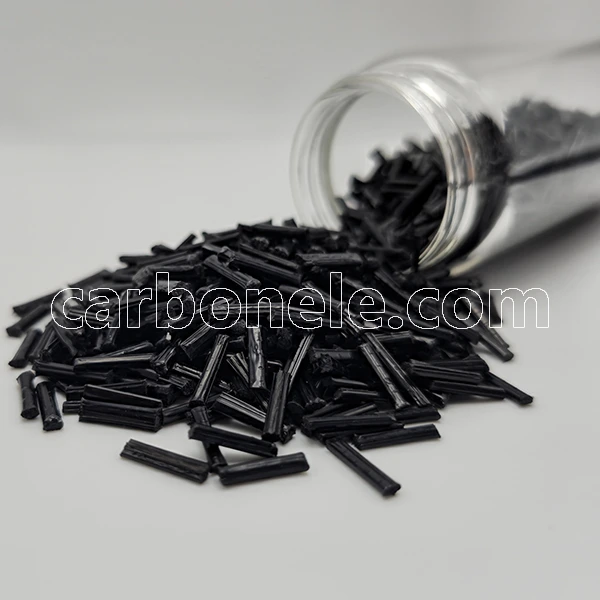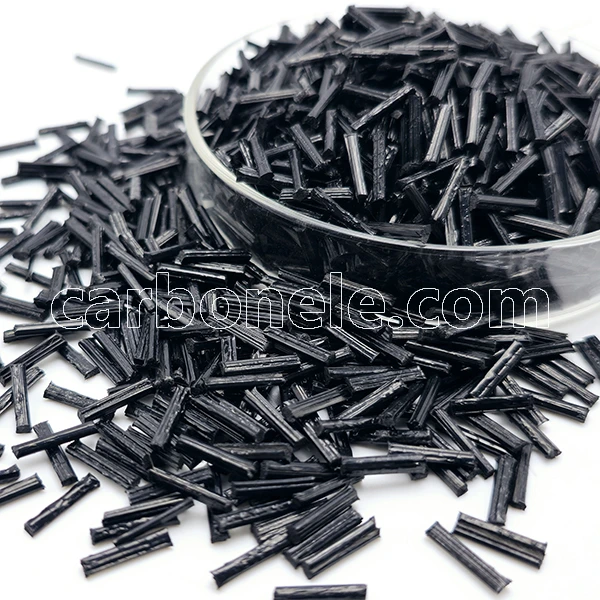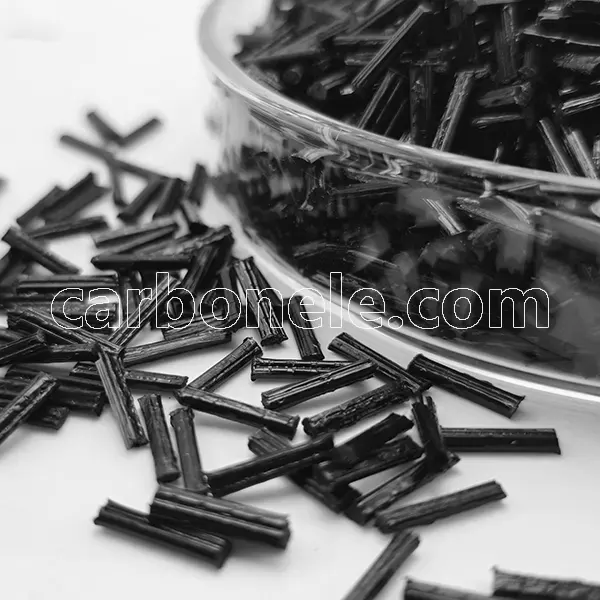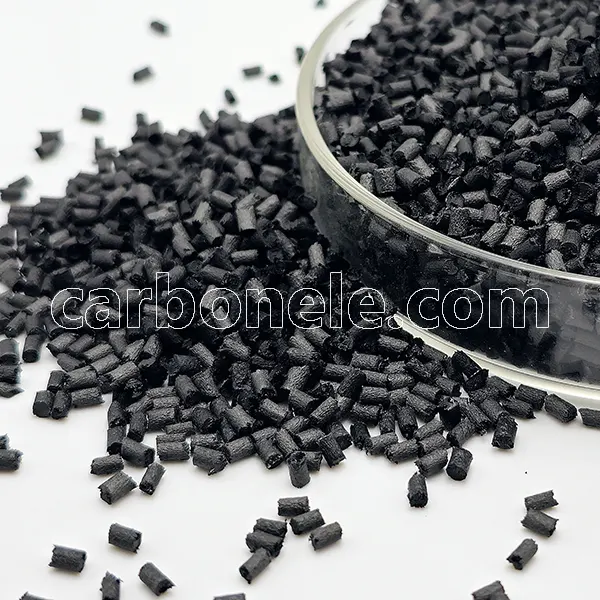
Application Of PA6 Carbon Fiber Composite Materials In High Performance Materials - Carbon Fiber Compounds Manufacturer | Supplier
Particularly in the sectors of industry, aerospace and automotive manufacture, the need for high-performance materials is rising in the fast advancing technologically period of today. Materials science has become a hot issue with PA6 carbon fiber composites, a novel material combining low weight, great strength and outstanding chemical resistance. It boasts more design flexibility and environmental friendliness in addition to mechanical qualities of conventional metals.
Processing and use of PA6 carbon fiber as a composite material also presents a set of fresh technological difficulties, particularly in the important link of material connection. Welding technique has drawn much interest in the use of PA6 carbon fiber composites as a significant way of linking materials. The welding feasibility, technical challenges and possible solutions of PA6 carbon fiber composites will be thoroughly discussed in this article along with the most recent research development and application possibilities in this sector.

Carbon Fiber NYLON 6 Composites
PA6 carbon fiber storage conditions
Because of its small weight and great strength, carbon fiber composites have drawn a lot of interest and use in industrial manufacture nowadays. Common and outstanding engineering material, PA6 carbon fiber’s performance stability and storage circumstances mostly determine its lifetime. The right storage technique guarantees material performance in many uses in addition to extending its service life. Key considerations for storage of PA6 carbon fiber include temperature, humidity, and light.
First, PA6 carbon fiber is highly influenced by temperature. It is advised to keep it at a temperature below 25 degrees Celsius in order to prevent high temperatures degrading or destroying material performance. Second, one other crucial storage condition is humidity. There is some hygroscopicity to PA6 carbon fiber. It will absorb moisture from a high humidity environment, therefore influencing mechanical qualities and dimensional stability. Storing it in a dry, well-ventilated area and shielding it with moisture-proof packaging can help to stop this from occurring. Furthermore influencing PA6 carbon fiber will be UV radiation. Sunlight over long terms will cause material aging, discoloration, and even cracking. Direct sunlight should therefore be avoided during storage, and covered by shade materials.
Companies and manufacturers often follow a set of steps in real use to make sure PA6 carbon fiber’s storage conditions satisfy criteria. For instance, the warehouse has temperature and humidity monitoring devices to instantly track environmental changes and make necessary adjustments. Further safeguarding carbon fiber components comes from supplementary items such shade cloths and moisture-proof containers. By means of these steps, the service life of PA6 carbon fiber may be sufficiently prolonged to guarantee that it maintains great performance in many uses. These storage parameters apply not just to PA6 carbon fiber but also provide insightful guides for the storage of other such materials.
Choosing the right PA6 carbon fiber material
Ensuring product performance and lifetime depends mostly on selecting the correct PA6 carbon fiber material. varied application situations call for varied properties from PA6 carbon fiber, hence numerous elements must be taken into account when deciding. Clarifying first the application environment and particular requirements is important. PA6 composite materials with a high concentration of carbon fibers are favored for uses requiring great strength and high stiffness, like automobile components and aircraft constructions. Excellent mechanical qualities and great load and stress resistance characterize such materials.
Furthermore, it is especially crucial to choose PA6 carbon fiber composites with outstanding chemical resistance for uses like industrial machinery and marine equipment that need for chemical corrosion and wear resistance. Second, when selecting PA6 carbon fiber materials, one also has to take pricing into account. Although high-performance PA6 carbon fiber materials are more costly, their long life and great dependability help to deliver better cost performance. At last, contemporary industrial material choice also takes sustainability and environmental preservation into great weight. Choosing PA6 carbon fiber products with environmental certification adheres to world environmental protection trends and helps lower environmental effect.Tests and studies allow one to assess the performance of many PA6 carbon fiber materials in the particular choosing procedure.
For instance, grasp material performance in real-world applications by means of tensile testing and impact tests. Moreover, maintaining the choice of appropriate materials depends much on interaction with suppliers. We can better grasp the material properties and extent of application by means of technical assistance, material data, and supplier communication. Generally speaking, the choice of appropriate PA6 carbon fiber materials calls for thorough evaluation of application requirements, performance criteria, cost and environmental protection and other aspects. By means of rational decision-making and scientific techniques, make sure the chosen components can satisfy the many demands of useful applications.
Under a high temperature environment, what performance does PA6 carbon fiber show?
One of the elements engineering design has to take into account is the effect of a high temperature surroundings on material performance. Because of its great mechanical qualities and chemical resistance, PA6 carbon fiber is extensively employed in certain high temperature situations. Under a high temperature surroundings, PA6 carbon fiber shows strong mechanical qualities and thermal stability. Generally speaking, PA6 carbon fiber can retain excellent dimensional stability and strength at high temperature settings; its heat deformation temperature is over 200 degrees Celsius. PA6 carbon fiber is not prone to brittleness or deformation and can sustain great mechanical qualities even in long-term high temperature usage.
Furthermore resistant to chemical erosion of compounds like acid, alkali, and salt, PA6 carbon fiber also has outstanding chemical corrosion resistance under high temperature environments. PA6 carbon fiber may, however, break down thermally at very high temperature conditions (over 250 degrees Celsius), therefore degrading performance. Therefore, it is advisable to fully evaluate temperature conditions and implement suitable cooling and protection actions when developing and utilizing PA6 carbon fiber materials.Practically, various extra steps are normally performed to guarantee the performance of PA6 carbon fiber in high temperature surroundings.
To lower the surface temperature of the material, for instance, take into account employing material coatings or heat dissipation devices in the design stage. Furthermore enhancing PA6 carbon fiber’s high temperature performance is material formula optimization and incorporation of heat-resistant additives. Although PA6 carbon fiber shows great performance in high temperature settings generally, suitable design and protection strategies must be implemented to guarantee its stability and dependability at very harsh circumstances.
Are PA6 carbon fiber weldable?
One technically difficult but practical method for PA6 carbon fiber composites is welding. The low melting point of PA6 and the great thermal conductivity of carbon fiber mean that during welding the heat energy input must be precisely regulated to avoid material damage or performance loss. Several often used methods that heat the material to a molten state in various ways to accomplish material connection include hot air welding, ultrasonic welding and laser welding. Uniformity and strength of the weld depend especially on the regulation of heating rate and temperature distribution during welding. Moreover, minimizing welding stress and enhancing joint stability depend equally on cooling and post-treatment after welding.
Actually, welding PA6 carbon fiber calls for professional knowledge and expertise using modern technologies. Welding quality directly results from the choice of welding technique and parameter value. For large-area welding, for instance, hot air welding is appropriate; for sensitive components, ultrasonic welding is. The optimal welding strategy may be found by means of ongoing testing and optimization. More creative welding processes should be used to PA6 carbon fiber composites in the future as technology develops, therefore advancing their applicability across a wider spectrum of industries.

Advantages and disadvantages of PA6 carbon fiber composites
PA6 carbon fiber composites must be fully taken into account in terms of storage circumstances, material selection, high-temperature performance and welding feasibility as a high-performance material. While careful material selection may satisfy the performance criteria of certain uses, the proper storage technique guarantees the initial performance of the material. Although PA6 carbon fiber shows strong thermal stability in high-temperature surroundings, its long-term performance has to be further investigated. Furthermore, implementing the use of PA6 carbon fiber in a more broad spectrum of applications depends on investigating efficient welding and connecting methods. Knowing these features and technical advancement will help PA6 carbon fiber composites to be used in more different ways.
Feature Product
-
PA12 LCF30 for Drone Fuselages & Wings
What do you know about PA12 LCF30? PA12 ...
-
Competitive Price PA6 LCF30 Composites
What’s it? PA6 LCF30, which stands...
-
ABS CF10 Compound ABS 10%CF Thermoplastic Compo...
What’s ABS CF10? ABS CF10 refers t...










